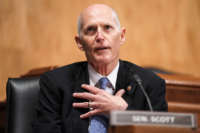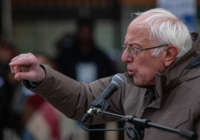
On Wednesday, the National Labor Relations Board (NLRB) rejected an argument that Starbucks has been employing in its union-busting campaign, setting a precedent against the use of the tactic in the future.
The company has repeatedly argued that union elections should happen on a regional basis, rather than store-by-store. Voting this way would dilute the union elections for the company, making it so that employees at other stores that aren’t in the midst of unionizing would also cast a vote; this would make it harder for Starbucks Workers United to reach workers that are casting a ballot. The company argues that union elections at individual stores affect other stores in the region, which can encompass a dozen locations or more.
Starbucks has made this argument in attempts to delay or stop elections during every election so far, and the NLRB has rejected it each time. However, this week’s decision will make it harder for the company to make the argument in the future, setting a binding precedent against its use.
In this case, Starbucks had said that the vote count in Mesa, Arizona, which was scheduled for last week, should be delayed in order to accommodate more stores’ votes – an argument that was already denied last month when the company tried to stop the election that was ongoing at the time.
The labor board said in its decision Wednesday that there are “no substantial issues warranting review” and that the board’s presumption that votes will be counted store-by-store is appropriate. The vote count for the Power and Baseline store has been scheduled for Friday afternoon, and the union is confident that it will be a “delayed victory” for the workers.
Starbucks used the same argument in its attempt to delay a vote count for three stores in Buffalo that was scheduled for Wednesday. The ballots have been impounded and the count has been delayed while the NLRB rules on that challenge by the company.
The union expressed frustration that the NLRB allowed the Buffalo vote to be postponed even though the labor board has continually ruled against the company’s voting argument.
Ian Hayes, an attorney for Starbucks Workers United, said that the company deliberately filed its challenge at the end of the eligible period to do so in order to have the votes impounded. Indeed, the company had pushed its petition to delay the Buffalo vote count so far back last week that it ended up missing the deadline for the filing by eight minutes.
“Starbucks will imply they had nothing to do with this further delay in the voting process by vaguely gesturing towards the legal process. That is a farce,” Hayes said in a statement. “This would not have happened without their strategic decision. This is exactly the result Starbucks wanted, and the NLRB handed it to them today.”
While the union is confident that the Mesa, Arizona, vote will succeed, workers and organizers noted that delaying the vote count was a tactic by the company to kill momentum. As the union campaign has grown stronger, the company has gotten bolder and bolder in its union-busting tactics.
Earlier this month, Starbucks fired seven union organizers in Memphis, Tennessee. Recently, it also fired a union organizer and member of the bargaining committee in Buffalo. While the union has said that the terminations in Memphis are illegal, however, labor laws only allow extremely light punishments for the company, meaning that the company could view it as worth the risk to break the law in order to union bust.
Despite the company’s anti-union tactics, the union effort grows larger nearly every day. Over the weekend, Starbucks Workers United reached a milestone of over 100 stores filing for representation, as the two unionized stores in Buffalo are in the midst of contract negotiations.
This post was originally published on Latest – Truthout.




























